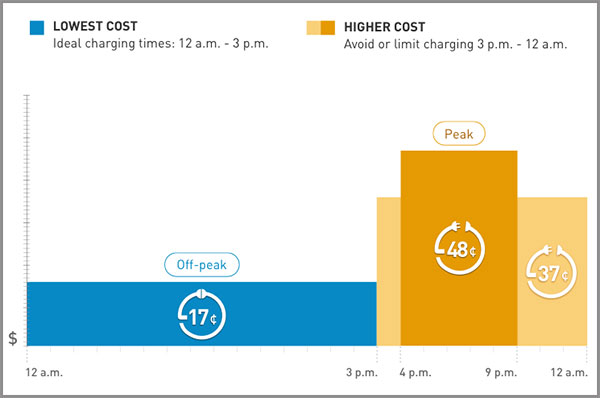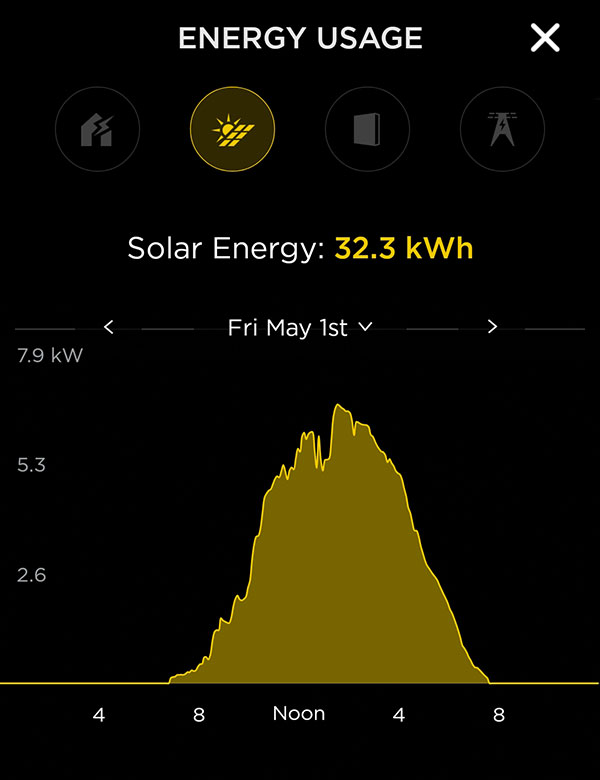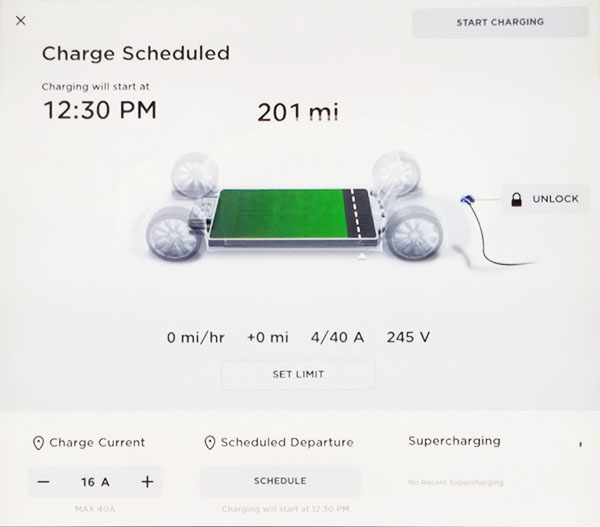
When you have a solar system with Powerwalls, the system works quite well at minimizing your grid power requirements. It is mostly a set-and-forget operation. For those that are mostly 100% self-powered, there are some easy tricks to save a bit more. Usually, these systems sell the excess power back to the utility. We explore how you can get more excess power and improve the longevity of the Powerwall! (Sep-2020 Update)
Time of Use Rates
For those who have been using TOU (Time of Use) electrical rates, most avoid the use of the major household devices during peak-rate times, where the costs can be 3 or 4 times greater than off-peak rates. For example, you may set your EV to start charging at Midnight to get the lowest off-peak rate. Similarly, you might run the dishwasher late at night, perhaps even using a delayed start to push it into the lower-cost off-peak rate.

Saving Money
Turns out, using late night for charging can be the wrong strategy for a solar/Powerwall system. For major power-consuming items that have flexibility, the ideal time to use these devices is when you have significant solar production. For example, my system produces 4 kWh or more from 10:30 am to 4:30 pm most of the year.

The idea is rather than putting excess solar power into the Powerwall or the grid, use the power being generated by your solar system directly. By doing this, you eliminate a round trip loss of about 10% of charging the Powerwall and then later discharging into your high-power devices like a dishwasher or EV. This also saves a little bit of wear on the Powerwall battery, extending its longevity. Now I run the dryer and dishwasher in the late morning and my EV charging in the afternoon.
If your EV is home during the day, you can reset your EV to start charging when you have strong solar power. At the same time, reduce the charging power to be similar to what your solar system is generating. In my own example, 16 amps at 240 volts will consume 3840 watts. So, by setting the charging to start at 12:30 pm it would charge from the solar array and gains 10-15 miles of range per hour (depending on your EV model). Over 4 hours it provides me a daily range of 40+ miles powered 100% from solar. If needed, it would not stop at 4:30 but would continue to charge until the set charge percentage is reached.

Even if you use your EV daily to commute to work, it may be better to start charging as soon as you arrive home when you are still generating solar power. For this situation, either turn off timed charging entirely or set it to start charging a little after you get home. This allows the consumption of available solar power and is supplemented by the Powerwall if needed. If you wait until midnight to start charging, only the Powerwall supplies power.
Other Power Usage Shifts
There are several home items that have flexibility as to when you use them. Shifting your usage pattern to operate these items during significant solar generation will generate more useful total energy.
Major Power Consumers with Flexibility:
- Electric Car Charging
- Electric Dryer
- Dishwasher
- Electric Oven (sometimes)
- Electric Cooktop (sometimes)
- Microwave (sometimes)
- Iron
Major Power Consumers with less Flexibility:
- Home Heating
- Home Airconditioning
- Electric Hot water heater
- Refrigerator
Other Power consumers, not particularly important due to short use, low power, or low flexibility:
- Computer
- Phone chargers
- Lighting
- Fans
- Hairdryer
- Curling iron
- TV
Calculating Savings
Let’s say your car requires 16 kWh daily, and you use another 4 kWh with appliances that can be run during primary solar generation times for a total of 20 kWh. By shifting this usage to directly power from solar, that would mean a 2 kWh savings per day. Assume 75% of the year has strong solar. The yearly savings would be 2 kWh * 365 * 0.75 = 547 kWh. This the power that would be lost if you used the Powerwall to store this power during the day and discharged at nighttime for your EV and appliances. Another way to look at it is 547 kW more would be sold back to the utility. Now the value will range dramatically depending on the amount of money your utility pays for that power. In the PG&E region, they pay a paltry $0.03 kWh, so your savings per year is about $16. Some utilities pay retail rates, so it may be worth a lot more.
Obviously, every system is different, and it may be easier if some people are home during the day. With Winter lower solar output, if you are not still 100% self-powered, you want to avoid taking grid power during the peak-periods. Then again, if the savings are minimal, it may not be worth the bother.